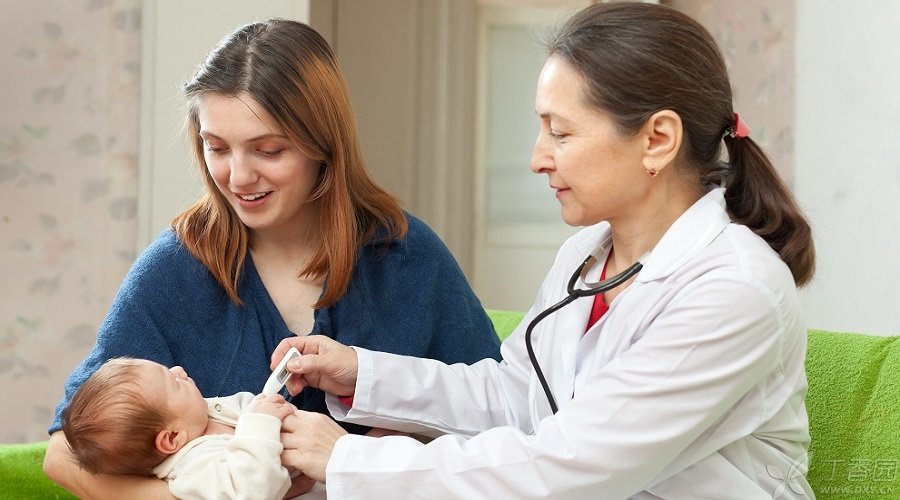
Because mercury thermometers can cause accidents such as mercury poisoning and aspiration, the American Academy of Pediatrics recommends that [pediatrics gradually stop using mercury thermometers]. However, every time people are called upon to stop using mercury thermometers, there will always be doubts, [electronic thermometers are not sure, or mercury thermometers are the only way! ] [It is not accurate to measure with ear thermometer. It can be measured twice in one minute, and the temperature can be 2 ℃ different! ].
Is it really the thermometer? In fact, the accuracy of electronic thermometers is sufficient to cope with body temperature measurement. Most of the time, [inaccuracy] is not the cause of thermometers, but the method of [measurement] is problematic.
The body temperature itself fluctuates
The child’s normal body temperature (axillary temperature) fluctuates within the range of 36.0 ~ 37.3 ℃, and the word “fluctuation” means that the child’s normal body temperature does not fluctuate within a certain fixed value, but within a certain range. Normal body temperature will fluctuate, and when fever occurs, the range of body temperature fluctuation is often larger.
When a parent brought his child to see a doctor, he reflected that his body temperature was 39 ℃ at home, but why was it only 38 ℃ at the hospital?
This is probably because the child’s body temperature itself has changed, not because the thermometer is inaccurate.
Activity affects body temperature
In healthy children, the body temperature may rise slightly higher after eating milk or exercise, even reaching 37.8 ℃, which is not abnormal. In order to avoid interference and misjudgment, the body temperature should be measured as far as possible after eating milk or exercise, and the body temperature should be measured after 30 minutes of rest after eating milk or exercise.

The environment will affect [the measured value]
1. Axillary temperature
Moist skin can also affect the measurement results, such as sweating or just taking a warm bath. Measuring axillary temperature at this time cannot accurately reflect the child’s real body temperature. Therefore, please make sure to dry your skin before measuring.
2. Ear temperature
The ear thermometer is based on the infrared reading released by the tympanic membrane, with high accuracy. However, due to the direct communication between the ear canal and the external environment, in cold winter, the tympanic membrane temperature will drop after the child stays outdoors for a period of time, resulting in the measured value not correctly reflecting the actual body temperature of the child.
Therefore, in winter, if the child has just been outdoors, the child should be allowed to stay in a warm room for at least 15 minutes before measuring the body temperature, then the ear thermometer can measure the more real body temperature of the child.
3. Mouth temperature
If the child has just drunk hot water or eaten ice cream, the oral temperature cannot reflect the actual body temperature. You should wait for 30 minutes to allow the oral temperature to return to normal before measuring.
Precautions for Taking Children’s Temperature
1. Axillary temperature (fever > 37.3 ℃)
When measuring axillary temperature, ensure that the tip of the thermometer is completely clamped by skin and ensure sufficient reading time.
If the child does not cooperate and does not move tightly, the reading will be lower than the actual temperature. Usually, digital thermometers need to be clamped on the arm for about 4-5 minutes to accurately read, and if the measurement time is not enough, the reading will also be lower than the actual temperature. However, new products with very short measurement time have appeared.
2. Ear temperature (fever > 38 ℃)
The time required to measure ear temperature is much shorter than that required to measure axillary temperature. It is very suitable for children who do not cooperate with body temperature measurement. When using the ear thermometer, it should be measured in the direction of the tympanic membrane. If the positioning is not correct, it will also affect the accuracy of the measured value. When measuring, the ear canal should be straightened first. For those who are less than 1 year old, they only need to pull the ear backward. For those who are more than 1 year old, they need to lift the auricle upward to ensure the straightening of the ear canal. In this way, the ear thermometer is also easier to aim at the tympanic membrane for measurement, so as to correctly measure the child’s body temperature.
3. Oral temperature (fever > 37.5 ℃)
It is very important to position the thermometer correctly. Remember to place the top of the thermometer on the sublingual side with it facing inward instead of directly on the tongue surface for the child to hold.
